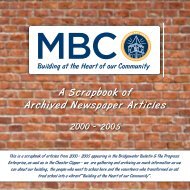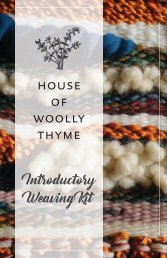You also want an ePaper? Increase the reach of your titles
YUMPU automatically turns print PDFs into web optimized ePapers that Google loves.
Verda Bruhm: Girls Cup for Highest<br />
Individual Score, 1935, went to Verda.<br />
Verda was the younger sister of Fred Bruhm.<br />
She had come from Blockhouse school to take<br />
high school at <strong>Mahone</strong>. She later went to<br />
Normal College <strong>and</strong> then taught for 40 years,<br />
including many years at the new Blockhouse<br />
school when it opened in 1962.<br />
Her “boyfriend” in the photo was unable to<br />
catch her. She married Percy Zinck in 1942.<br />
She modestly told her children that the only<br />
race she ever won was a walking race: <strong>and</strong> that<br />
was because everybody else was disqualified.<br />
photo: Courtesy Bruhm Family Collection<br />
102<br />
• Unfortunately, 1939 was the end of the Festivals. H.V. Corkum left for the War, <strong>and</strong><br />
Margaret McLean for Montreal. But individuals <strong>and</strong> small groups continued their<br />
interest in track. <strong>Bob</strong> Mader would practice pole vault on a pit alongside the school.<br />
Unfortunately, the field was then neglected until the 1970s.<br />
The Boxing Match: John “Kid” Whynott<br />
At the bottom right of the fourth column above, “An interesting boxing match” is<br />
mentioned. John “Kid” Whynott had recently left <strong>Mahone</strong> <strong>Bay</strong> school to work. His<br />
kid brother, Roger, was still in school <strong>and</strong> just over ten years later was to become<br />
Middle Weight Champion of Canada. Johnny was later to become a town councilor<br />
<strong>and</strong> was largely responsible for building the fine field that is at the old school now. He<br />
would be pleased to turn H.V.’s dream into reality.<br />
The High Light<br />
The school newspaper-magazine-yearbook was another legacy of the Corkum years.<br />
It was initially produced twice per year. The first edition was Christmas 1933, <strong>and</strong> it,<br />
later renamed several times, has been part of<br />
school life ever since<br />
The Very First High Light, Dec/1933<br />
The quality of work in The High Light of the<br />
1930s has never been equaled. It was school<br />
journalism at its best, with quality writing<br />
from all grades.<br />
‘High’ came from high school, ‘Light’<br />
from the symbol of knowledge <strong>and</strong><br />
enlightenment.<br />
And it was actually printed <strong>and</strong> published<br />
at the school by a print shop owned by<br />
the school, with the principal <strong>and</strong> student<br />
council having shares. In the 1940s <strong>and</strong><br />
50s inferior books were produced from<br />
a Gestetner machine. Later books were<br />
usually Picture Memory Books without<br />
the reporting or creative writing. A good<br />
example is The High Light of 1936.





